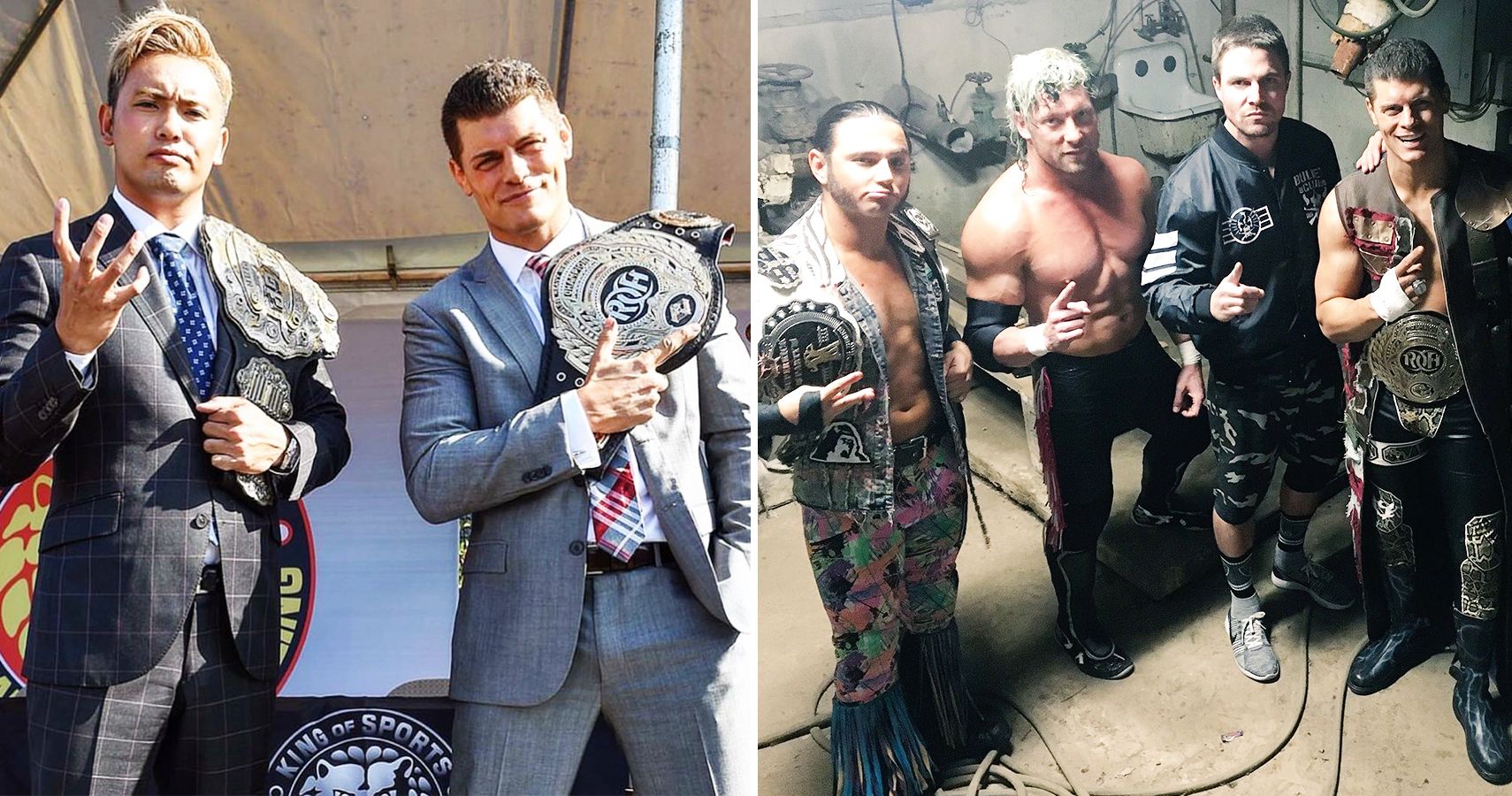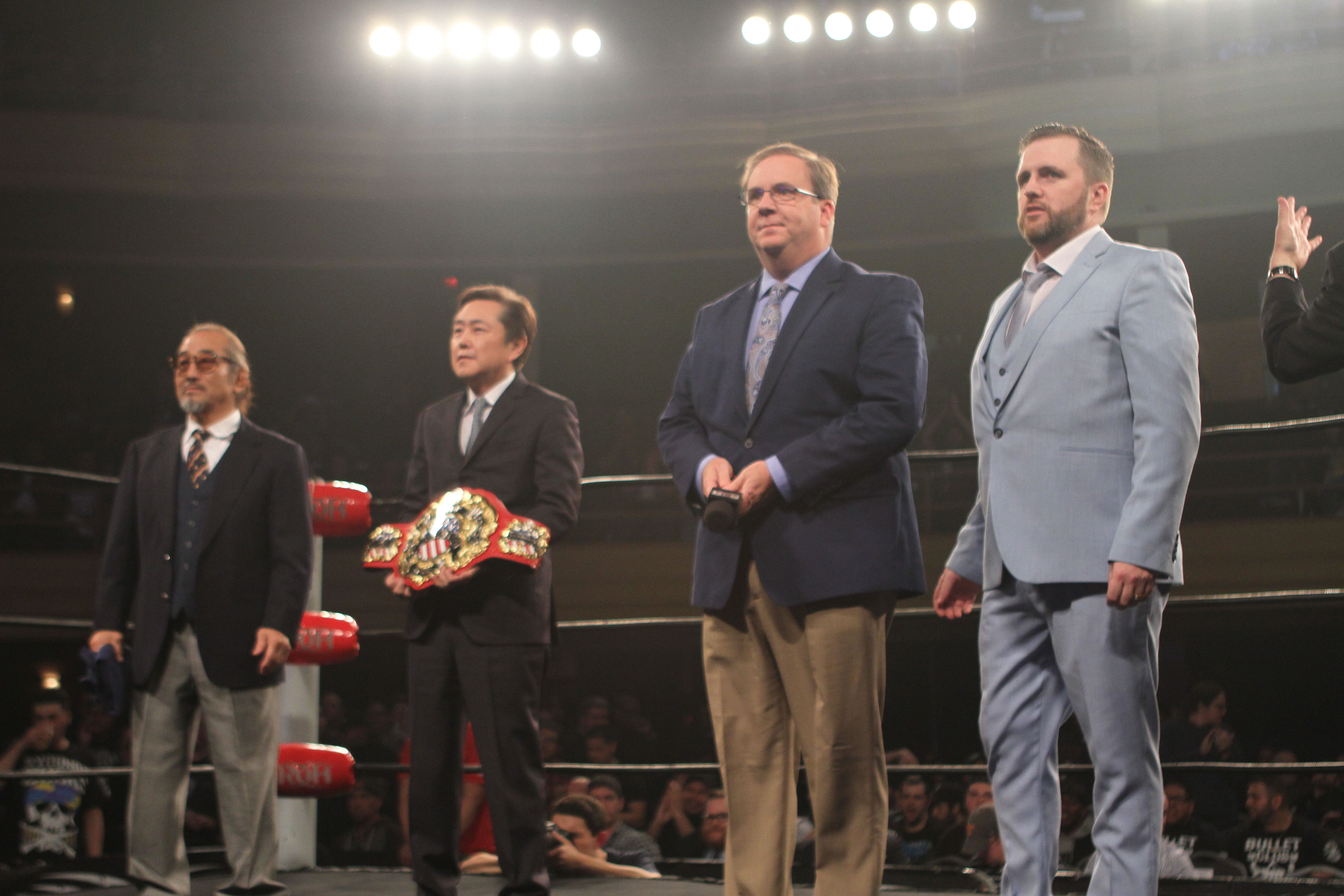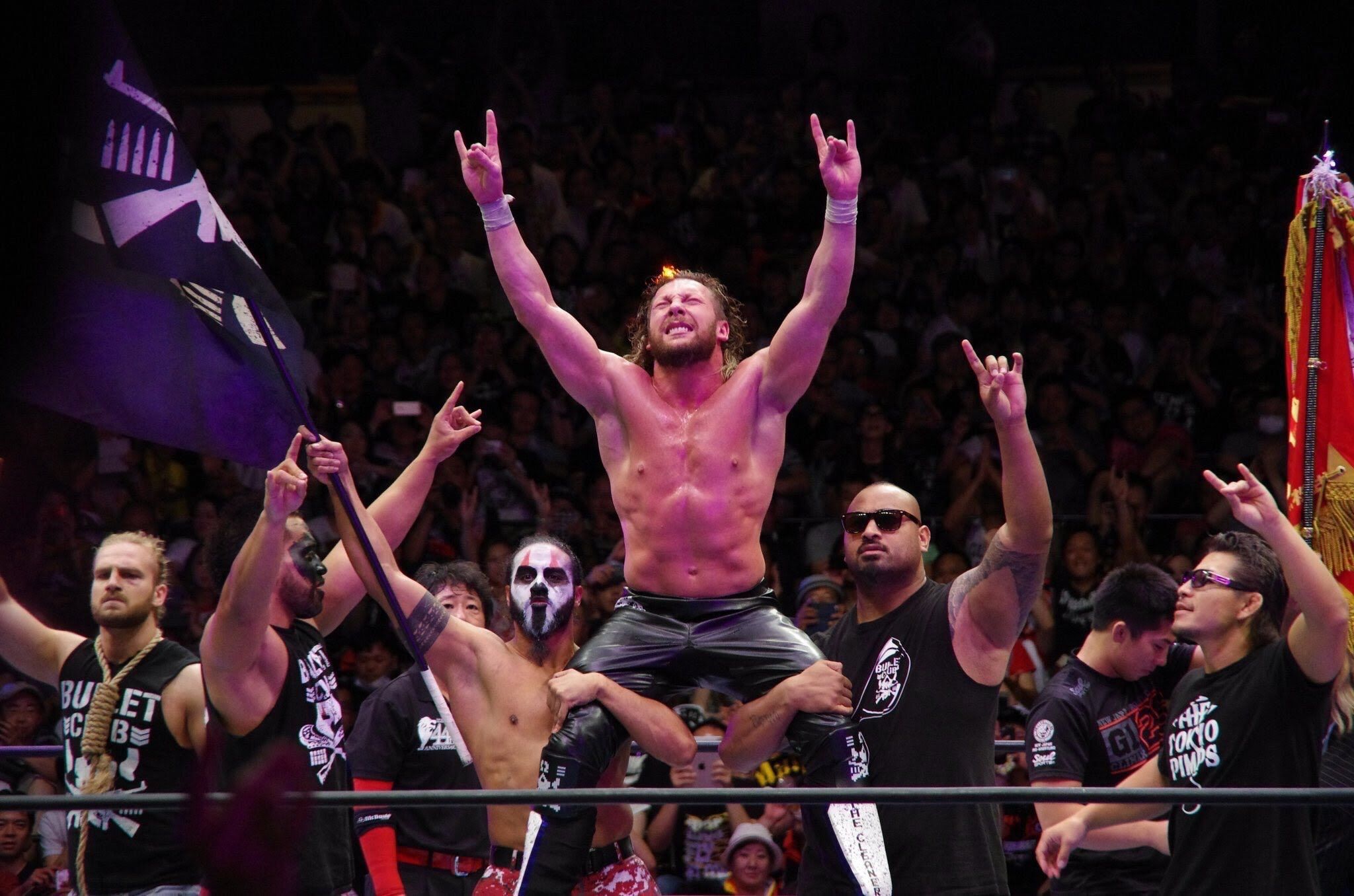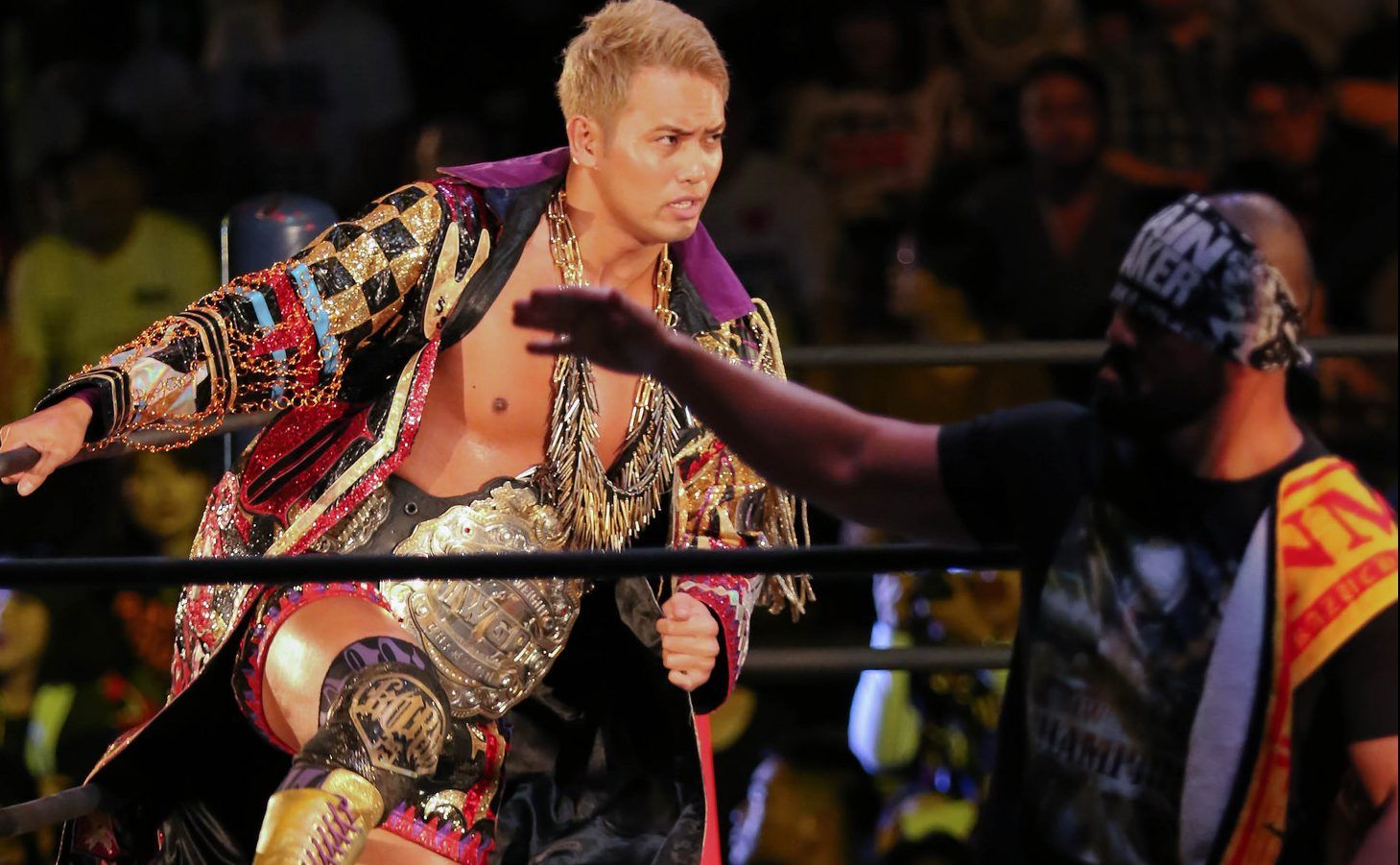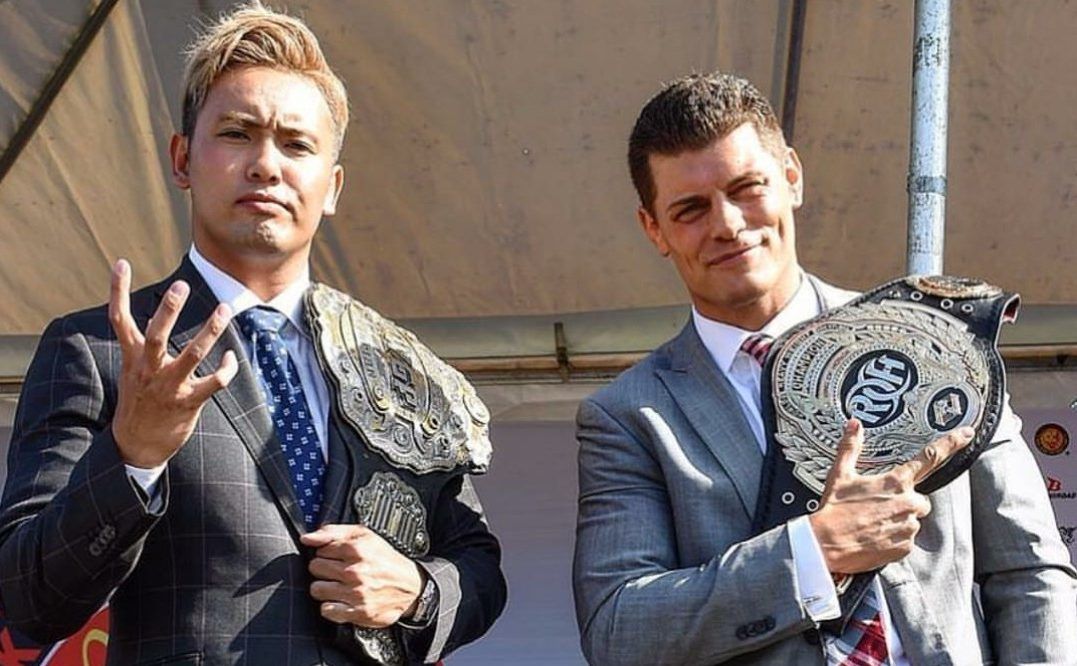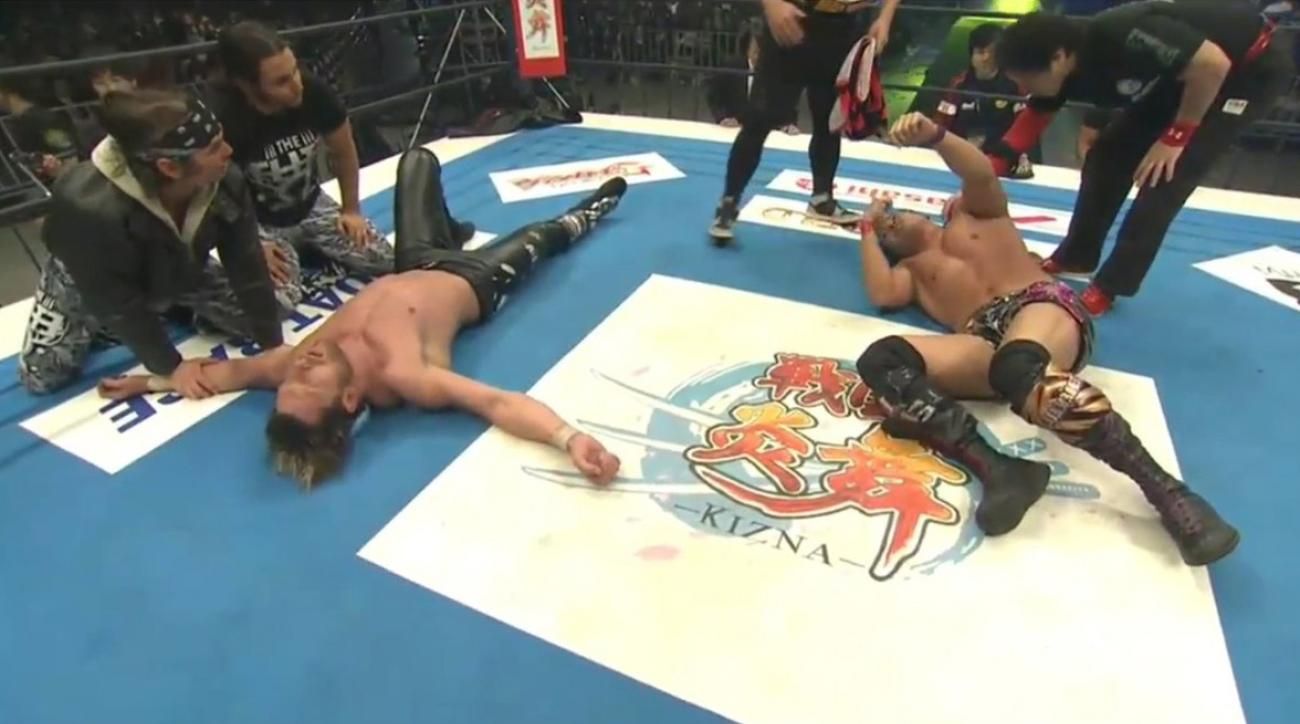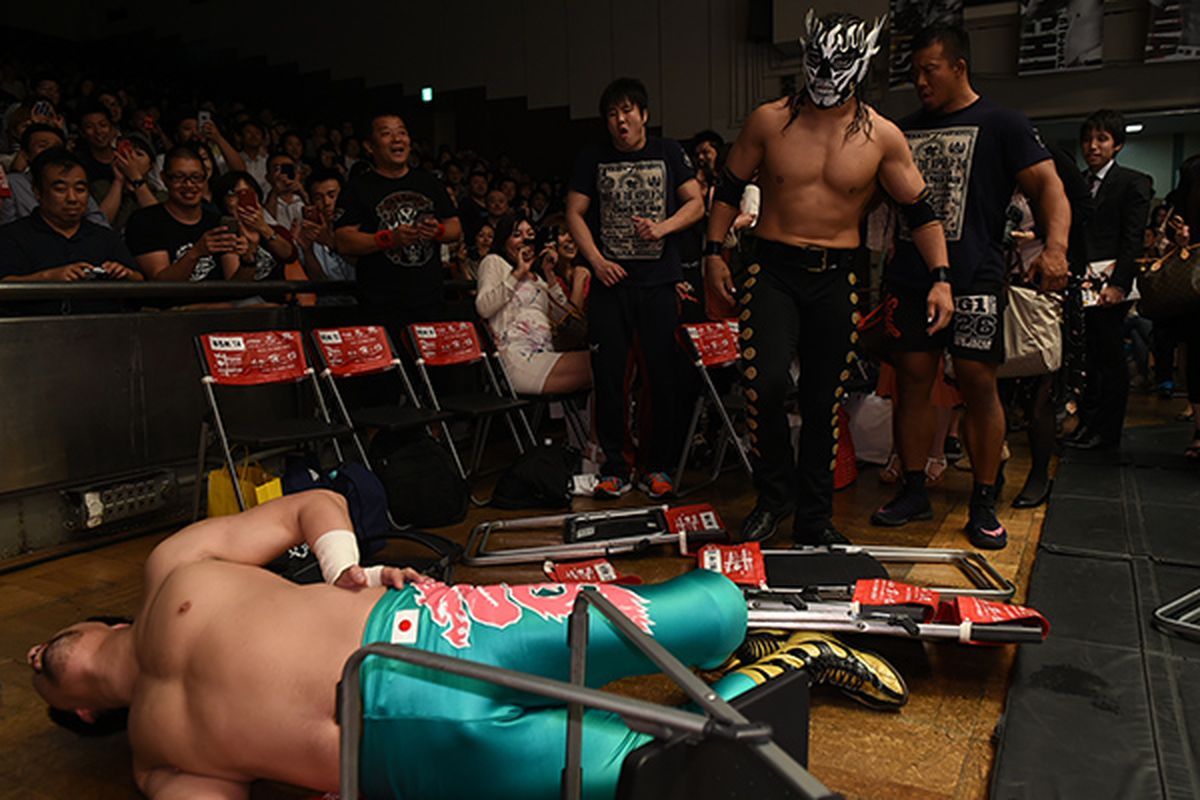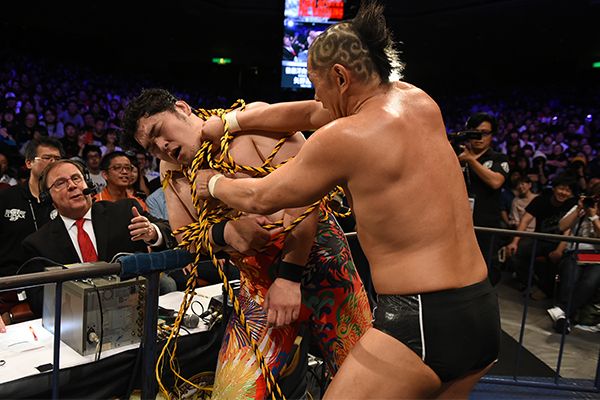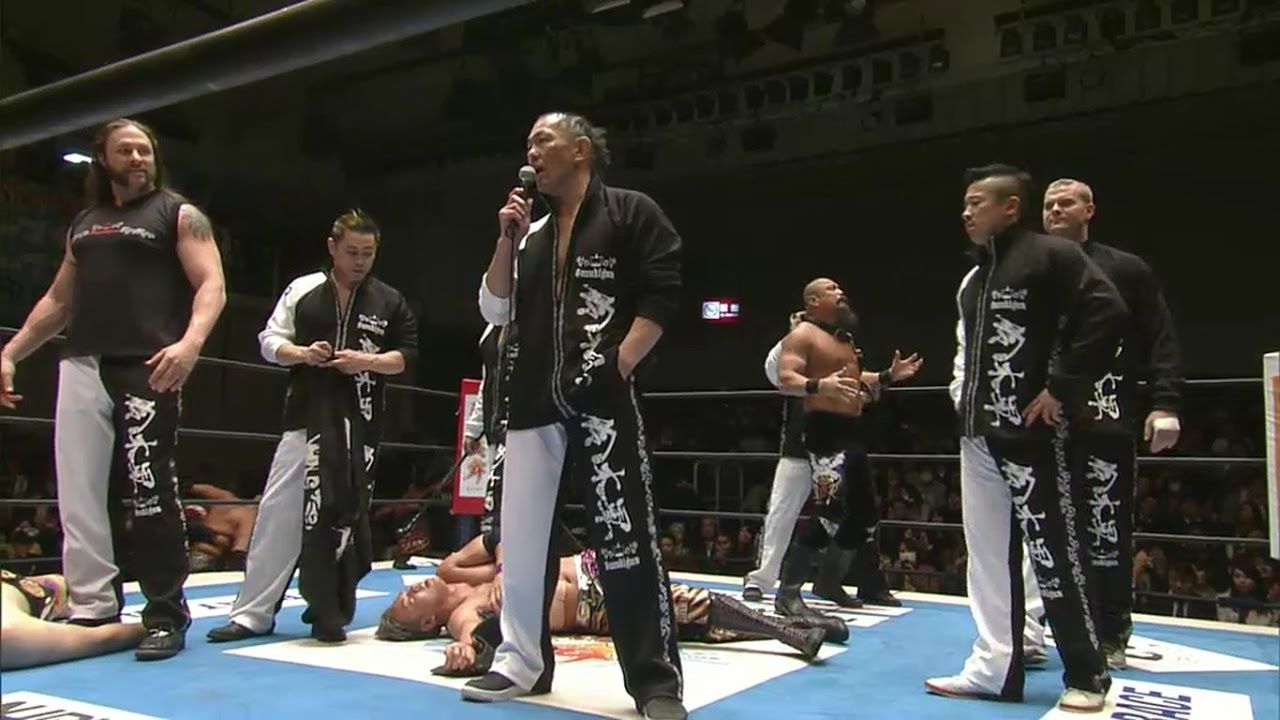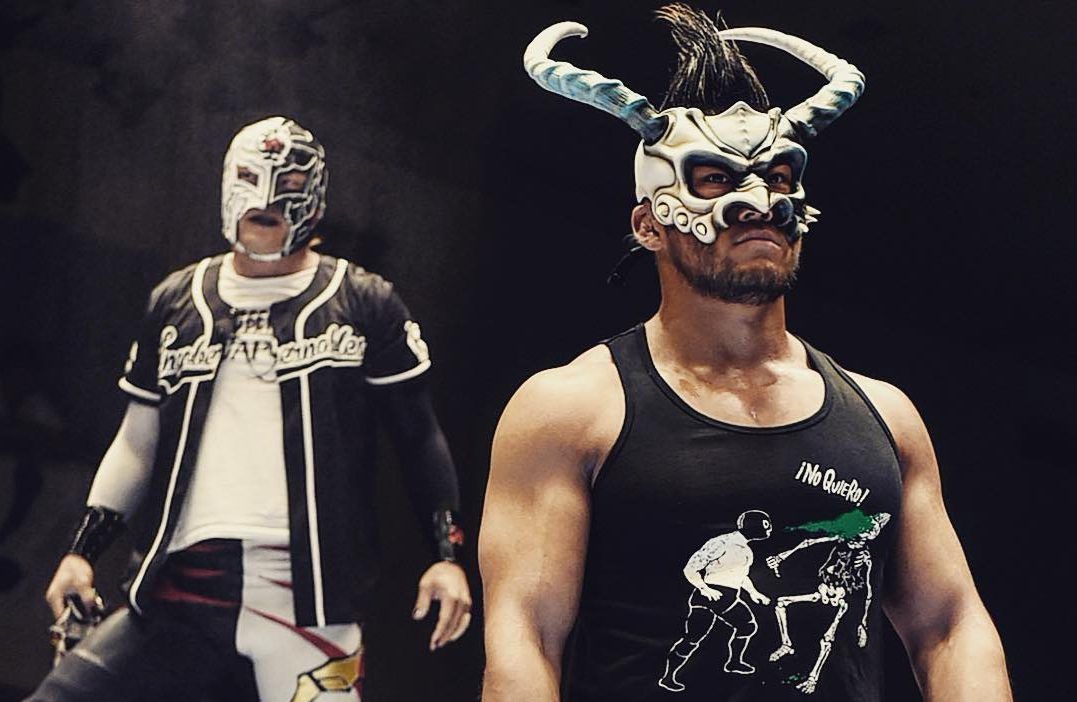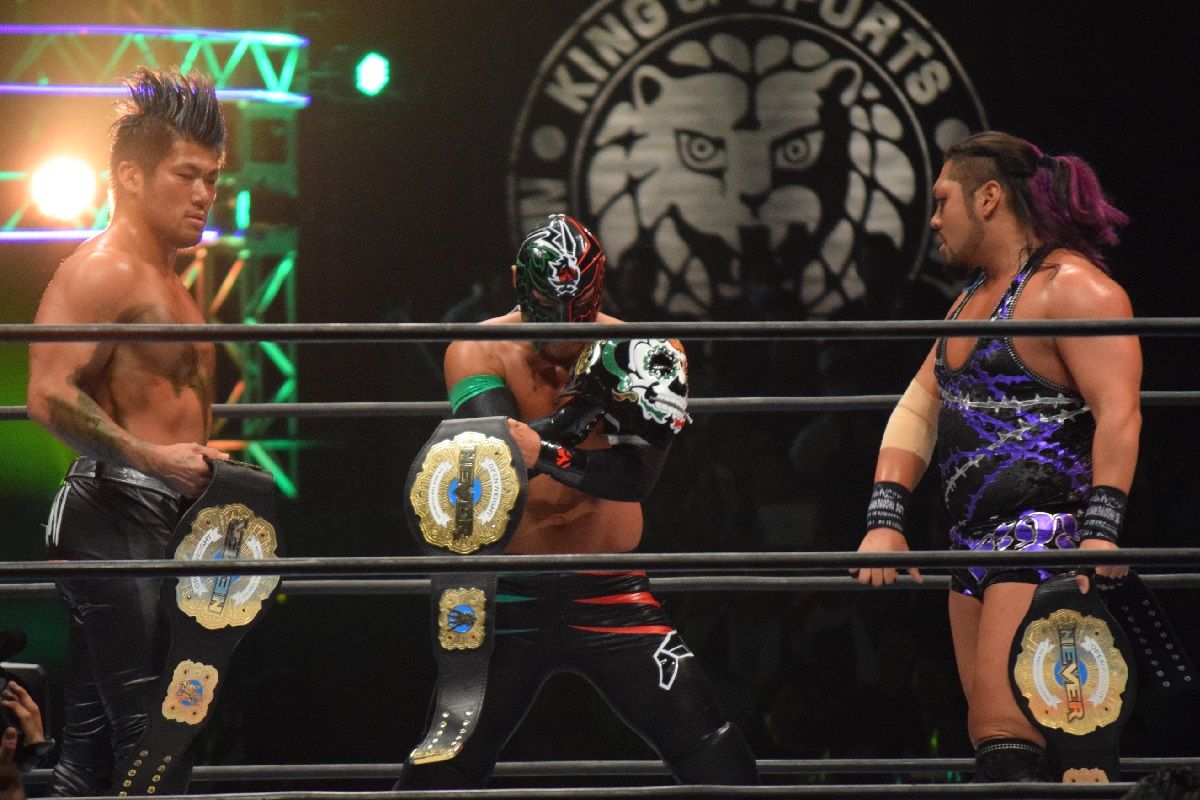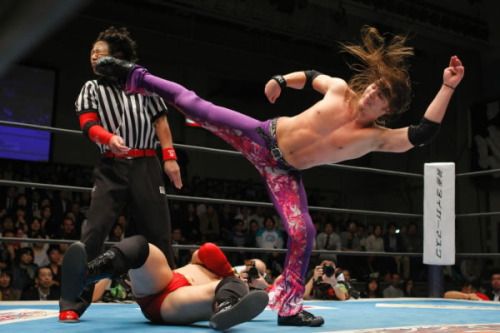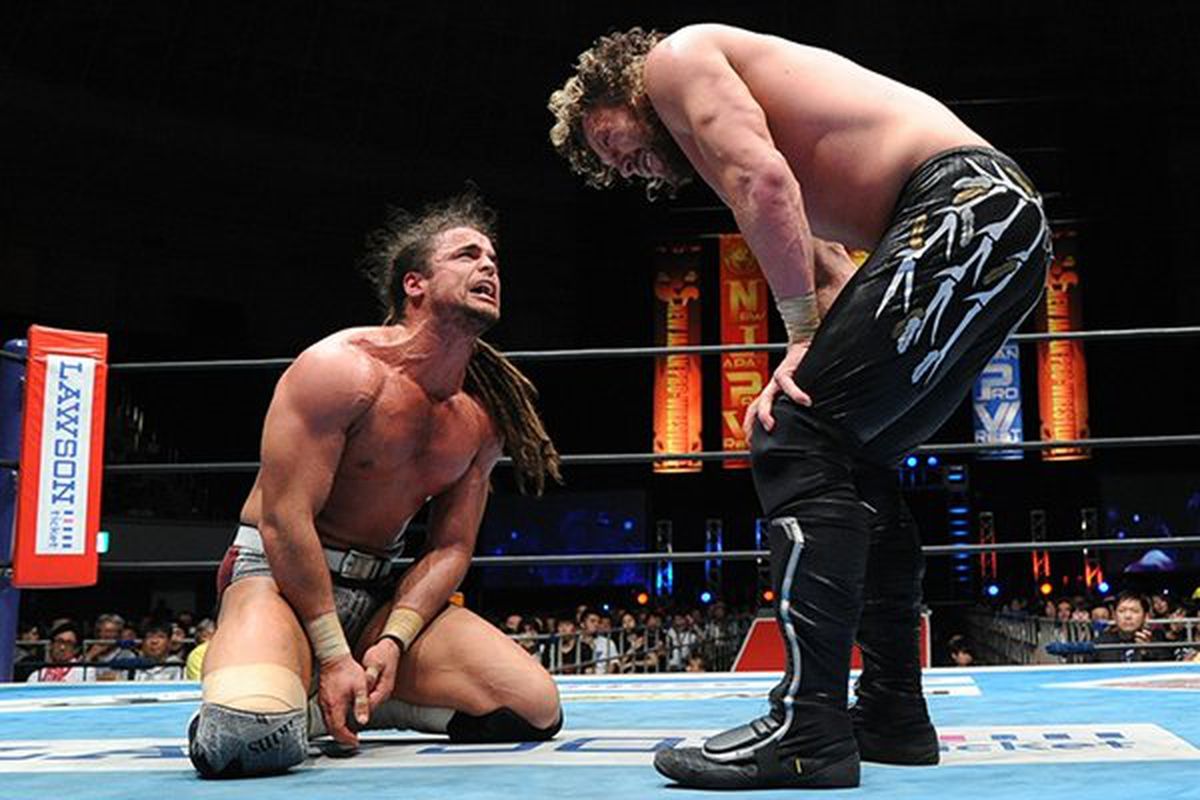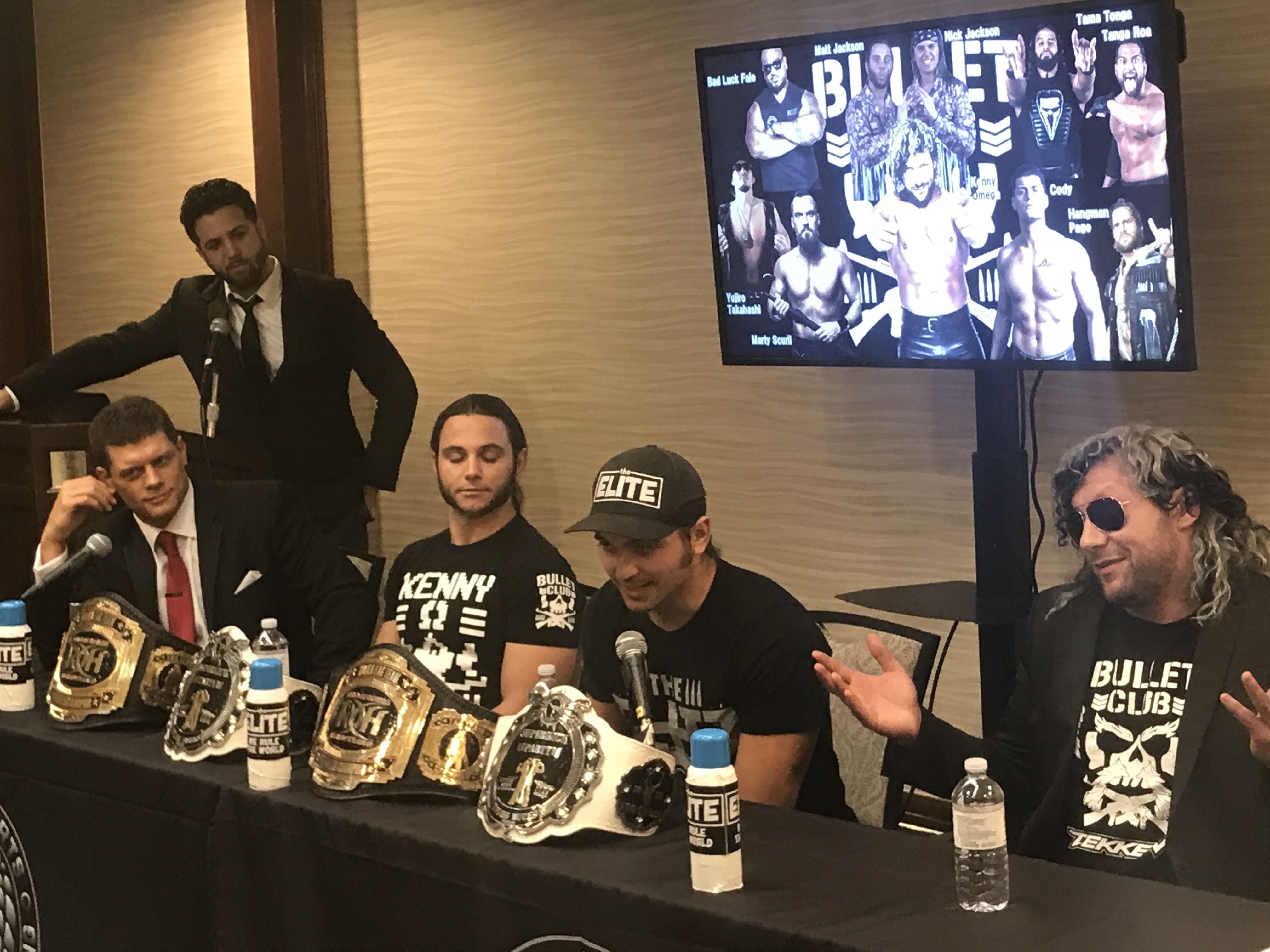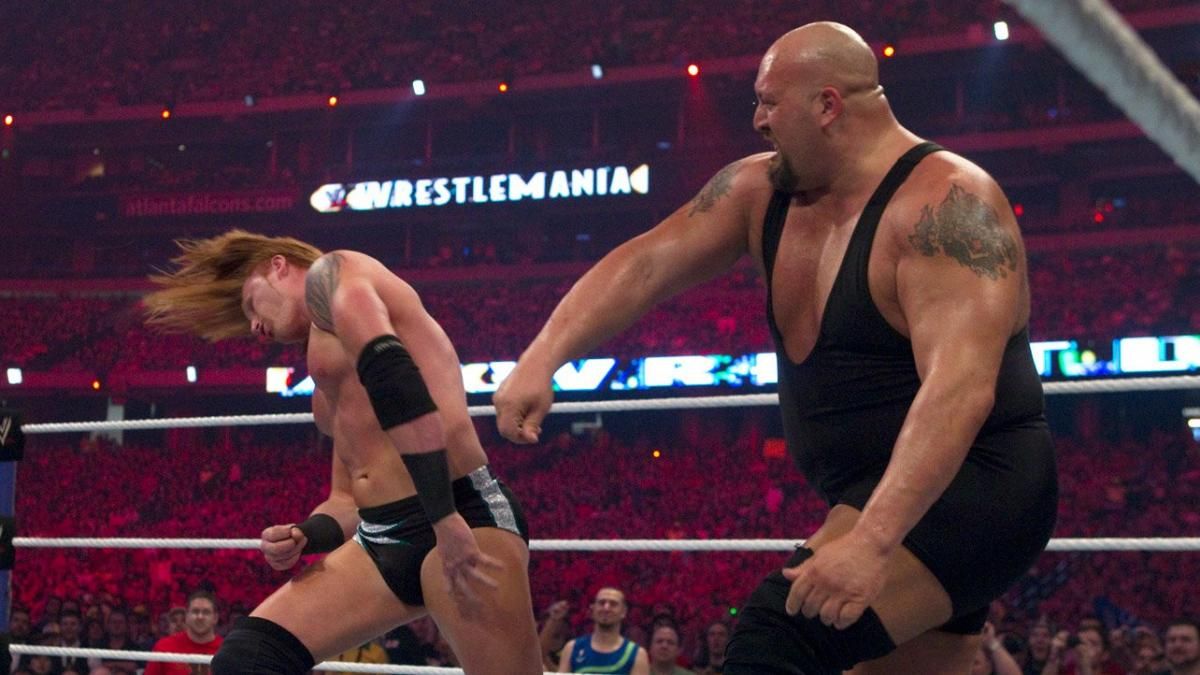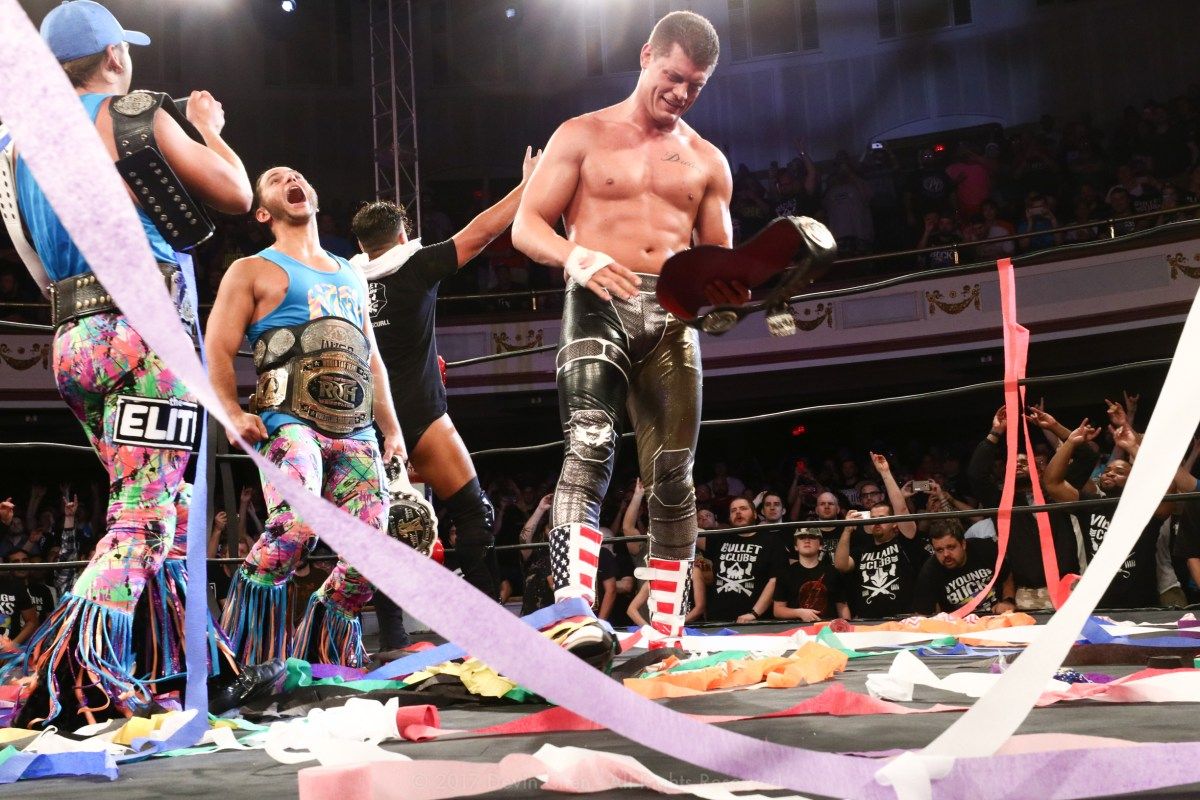New Japan Pro Wrestling (NJPW) is arguably the hottest wrestling company in the business right now, even though the company has been around for several years. The evidence of the company’s rise is the fact that WWE has signed away a number of the company’s top stars. The team of Luke Gallows and Karl Anderson, Shinsuke Nakamura and Ricochet came onto WWE’s radar thanks to NJPW shows being aired on American television.
What makes NJPW special, aside from the company’s hard-hitting but athletic style, and the myriad of colorful characters, is the fact that, unlike many other wrestling companies, New Japan is not trying to emulate WWE. In fact, there are several things that New Japan incorporates into the presentation of their matches, and the overall product, that WWE should consider copying. While WWE does a lot that is very good, there is always room for improvement, and borrowing a few components of how NJPW presents professional wrestling wouldn’t be the worst thing.
Though it would be unreasonable to expect WWE to copy every item from the list, even if WWE incorporated a few of them, the difference in presentation for WWE could be a change for the better.
15 Round-Robin Tournaments
A round-robin tournament is a tournament where there are two groups of competitors, and every member of a group faces every other member of that group. The member of each group who gains the most victories within their group will then face the winner of the other group for the ultimate prize. In New Japan Pro Wrestling, that format is used for the G-1 Climax. The G-1 Climax tournament is held every summer, and the winner of the tournament wins a shot at the IWGP Heavyweight Champion at New Japan’s biggest show; Wrestle Kingdom, which is held every January 4 at the Tokyo Dome.
The WWE calendar is full of pay-per-view events and world tours, so there is realistically no time for a tournament like this one, but WWE could try the format out on 205 Live or in NXT. A tournament like this would give lower card wrestlers the chance to showcase themselves in meaningful matches, even though ultimately, there will only be one winner of the tournament.
Gaining a title shot from the Royal Rumble doesn’t really show what the wrestlers can do, but seven or eight guaranteed matches in a tournament like this one would give the wrestlers the time to learn and improve with each outing, which, in the long run, will make the whole company better.
14 Defending Automatic Title Shots
A victory in the G-1 Climax gives the winner an automatic shot at the IWGP Heavyweight Title at Wrestle Kingdom. However, during the 4½ months from the end of the tournament to Wrestle Kingdom, any time that the holder of the title match contract competes in a singles match, the contract is defended, and if the holder loses the match, the contract becomes the property of the wrestler who defeated the original holder of the contract.
In WWE, there are two automatic title match opportunities. One is gained from winning the Royal Rumble, and one is gained from winning the Money in the Bank match. The Rumble gives an automatic WrestleMania World Title match, and MITB gives the winner a title shot whenever they want it within one calendar year. However, if these automatic title shots were forced to be defended, by the time that the title matches happened, the fans would know that the challenger has a legitimate chance to win, because he or she has been winning consistently since gaining their title opportunity.
13 Less Frequent Title Matches
AJ Styles is the WWE World Champion, and he has held that title for four months. During that time, Styles has defended the title seven times in televised matches, which is an average of one every 15 days, and this is not to mention the number of non-televised house show title defenses that he has taken part in. While the idea of a “fighting champion” is noble, frequent title matches become an expected occurrence, and seeing the title defended is no longer special.
On the other hand, IWGP Champion Kazuchika Okada has held his title for nearly 700 days, which is just short of two years, and he has defended the title 10 times. This is an average of one defense every 2 months. With the top title being defended so infrequently, it means that when a title match occurs, it is truly a special event. There is more time to build intrigue for the match, and tickets for the title match become more valuable because fans can’t just skip one event because there will be another one in a few days. In addition, a title victory over a “fresh” champion adds greater prestige to the victory and to the new champion.
12 The Ability to Ask the Champion for a Title Match
WWE likes to book “Flavor of the Month” title challenges, which means that a particular wrestler challenges for the title, and that one wrestler gets all of the title matches until the next challenger is revealed, or until the title changes hands. In New Japan, with the title matches happening so infrequently, on occasion, when a title match is concluded, a new opponent will come to the ring and demand a title match. This helps to set the stage for the next challenge for the champion in a less predictable manner.
Having a wrestler come to the ring and ask for a title match is an unpredictable element that adds to the shows, particularly if the wrestler asking for the title match is not one of the same wrestlers who has been receiving title matches from the champion up to that point. The internet reveals so much to wrestling fans, so having a wrestler who the fans wouldn’t expect come to the ring and ask for a match means that, as WWE used to like to say; “anything can happen at a show”, and this element also brings more people to the arenas.
11 Title Matches Without Animosity
In addition to having champions defend against a single opponent over and over, WWE also feels that every title match needs animosity between the combatants in order to have a compelling match. Unfortunately for WWE, the company hasn’t realized that a match between two talented individuals, where each person gives their all while trying to win, can be compelling, whether the two combatants like each other or not. Even better, having two men or two women have a hotly contested match, and then show respect to one another after the match is over, can be equally as compelling and appealing to the fans.
In other sports, sportsmanship does not detract from the overall presentation, and while it is obvious that professional wrestling is not like other sports, every situation does not have to be volatile for it to be enjoyed. Some fans like the sports end of sports entertainment more than the entertainment part, and would just like to see some phenomenal matches, as opposed to a soap opera with a side of wrestling. This is one might be a long shot, but it could also be a welcome change.
10 Title Changes on DQ or Count Out
In New Japan, a loss is a loss. Just like in other professional wrestling companies, if a wrestler is counted out of the ring or is disqualified, then that person loses the match. The difference in New Japan is that if that person is a reigning champion, and they are counted out or disqualified, not only do they lose the match, but they lose the title to the challenger. This way, a loss truly is a loss, and the champion is forced to fight in order to defend their title as opposed to running away from a daunting challenge.
WWE could incorporate this, and heels would still be able to generate heat, but they would have to work a little harder. In return, the fans would get matches that were guaranteed to be fought to a finish, as opposed to a champion getting disqualified or running away from the match and getting counted out. It is true that Ric Flair as a heel forged his legend through tactics such as this, but since cage matches do not end feuds the way that they used to, perhaps there needs to be a new way of thinking about wrestling matches.
9 Legitimate Out of Ring Counts
In accordance with the rule where if a champion gets counted out of the ring, he loses his title, New Japan matches feature a more legitimate ring out count than other wrestling promotions. New Japan referees give the wrestlers a 20 count, instead of the customary 10, but NJPW’s 20 count is 20 beats, as opposed to a 10 count that takes about 45 seconds, like in WWE. This means that not only do the wrestlers have to get back in the ring to avoid getting counted out, they literally only have 20 seconds, as opposed to the long but inconsistent 10 count in WWE.
The major difference in the ring-out counts is that in NJPW, if the wrestlers are fighting outside of the ring, the referee allows the combat to go on, as long as it is actually combat. However, if a wrestler is laid out, the ref counts to see if the wrestler can continue. Again, this makes the wrestlers have to stand and fight instead of running away from battle, and using the rule to protect their titles.
8 Faction Warfare with Title Implications
During the Attitude Era, WWE featured something they called Faction Warfare, where groups like DX, The Nation of Domination and the Disciples of Apocalypse battled for promotional supremacy. Unfortunately, the battles were meaningless, except to the men involved in the wars. On the other hand, Chaos, Suzuki-Gun, Taguchi Japan, The Bullet Club and Los Ingobernables de Japon are all battling for supremacy of New Japan, but these groups feature the champions of the company, and the battles involve the titles.
The top title resides with Chaos, and the tag titles live with LIJ, though LIJ members Naito and Sanada both covet the IWGP strap. The Intercontinental title was won by Suzuki-Gun leader Minoru Suzuki, who took it from Taguchi member Tanahashi, while Bullet Club leader Kenny Omega just lost the US title to Chaos member Jay White. New Japan’s Faction Warfare is the model that other wrestling companies should try to emulate, because with the titles involved, the battles are never without intrigue.
7 Tag Wrestlers with Legitimate Shots at Singles Titles
As mentioned, Los Ingobernables members Tatsuya Naito and Sanada both covet the IWGP Heavyweight Title, currently help by Kazuchka Okada. While Naito is a former champion, as well as the most recent G-1 winner, Sanada is one-half of the IWGP Tag Team Champions with Evil. Evil is chasing the NEVER Openweight championship while his partner is after the company’s top prize. The beauty of these title pursuits is that the challengers are presented by the company as credible contenders to the titles that they are after.
In WWE, tag team wrestlers are seen as nothing more than tag team wrestlers. If a tag team wrestler is booked to face a singles champion or a title contender, the tag wrestler is predictably destroyed with little-to-no resistance.
While WWE has more than enough credible contenders to the singles titles that there is no need to consider tag team wrestlers for singles titles, having every wrestler on the roster covet the titles, no matter their station, makes the titles seem more valuable. More valuable titles, combined with the previously mentioned infrequent title defenses, makes title matches special and must-see.
6 Six-Man Titles
The Miz currently has two men following him around, as does Finn Balor. The New Day has always been a three-man team, and for a brief period, Titus Worldwide featured Titus, Apollo and Akira Tozawa, and let’s not forget The Shield and the Wyatt Family. The point is that there are several groups within WWE that feature three wrestlers, and other groups come and go. Soon, The Undisputed Era and Sanity will find their way to the main roster, and there is no time like the present for WWE to institute a six-man tag team championship.
Six-man titles are essentially tag team titles with an extra man on either side. Beyond that, they are no different that regular tag team titles, except that there are more wrestlers involved in the matches. There is no good reason why WWE could not institute six-man titles, except for the fact that they might try to place a title on each show. However, since the Cruiserweights only appear on Raw, SmackDown could be the home of the six-man titles.
5 Ringside Care for Referees
During the matches in New Japan, there are usually several men positioned around the ring, and these men perform a variety of duties. One of their responsibilities is to care for the referees in the event that the referee is incapacitated as the result of a “ref bump”. If, during a match, the referee is knocked over or is rendered semi-conscious, he is immediately cared for by a ringside attendant. This way, he is not out of the match for an extended period of time, and is quickly able to resume his duties within the match.
While this might seem as an odd situation, and one that WWE would be extremely hesitant to emulate, as with other things that New Japan does, it helps the in-ring performance to more closely resemble actual sport. As earlier stated, some fans prefer the sports end of sports entertainment to the entertainment portion, and would like for the matches to resemble actual sport. As such, in actual sport, if the ref is injured, he is treated and if he can return quickly, he does.
4 Instant After-Match Care for Wrestlers
Just as the refs are cared for during the matches, in NJPW, the wrestlers are cared for by ringside attendants after the matches. Ice packs are brought into the ring and the heads, necks and backs of the wrestlers are iced down so that the wrestlers can live to fight another day. This act also shows the fans that, though professional wrestling is performance art, the performers actually hurt during the matches, and are in need of medical attention once the matches are over.
The problem with WWE incorporating this into the matches is that WWE does not treat the matches as if they are genuine sport. Instead, the company has the announcers discuss any and everything other than the matches until there is a pin attempt. Though it would be an interesting component for WWE to add to its presentation, in the world of sports entertainment, the sport is secondary, and a few minutes spent showing the wrestlers receiving medical attention would prevent the company from showing its obligatory backstage skit.
3 After-Match Promos/Press Conferences
In New Japan, once the matches are over, the winner will grab a microphone and cut a promo on either the opponent who was just vanquished, or a future opponent. Also, for television, the combatants, will go to a table backstage, and will take questions from a press corps that has been assembled. Again, as has been discussed repeatedly in this article, this gives the NJPW matches the impression that they are genuine sport. While it’s true that WWE shies away from this, even in a sports entertainment setting, this could be done effectively.
In WWE, the backstage interviewer, and the constant appearances from the authority figures could be replaced with these segments, and the press corps could consist of anyone, because they are seldom seen on television. WWE could use writers, agents, trainees from the Performance Center, actors, or local talent brought in for a single show for these roles, because the focus would be on getting the wrestlers over. If the company were interested in this, they could just study some New Japan television to see how NJPW does it, and then the company could put the WWE spin on it.
2 No Fists to Face
If WWE incorporates the faster count, and the ability for champions to lose their belts by DQ or count out, there needs to be a way for heels to generate heat during matches. In New Japan, the wrestlers refrain from using closed fists, which has always been a rules violation in professional wrestling anyway, though it is not often enforced in America. Instead, the NJPW wrestlers use forearm shots to the side of the head, incorporating a fist only to the body, or as a way of generating heel heat. If WWE wants bad guys to truly be “bad guys”, then this is a simple and old school way to generate heel heat.
In addition, the forearm shot, when done correctly, looks like a more violent strike than does a fist. The forearm uses the weight of the entire body where at times, a punch does not. This simple move would make the wrestlers look like true tough guys, and might generate a better crowd response than a punch does. Besides, crowd response and suspension of disbelief is what sports entertainment is all about.
1 Cross Promotion with a Smaller Company
New Japan Pro Wrestling has a cross promotional arrangement with Ring of Honor Wrestling. Through this arrangement, NJPW wrestlers appear on ROH shows and vice versa. As a result, ROH wrestlers have the opportunity to appear in the G-1 Climax and at Wrestle Kingdom, while New Japan wrestlers have the opportunity to appear at the ROH Anniversary Show and at Super Card of Honor. This arrangement has been beneficial for both companies, as it has increased the visibility of both brands.
It is true that WWE does not need increased visibility, as it is the biggest company in the world, but an arrangement like this one is a great opportunity for WWE to help to elevate a smaller company. Companies like Court Bauer’s MLW or Tommy Dreamer’s House of Hardcore would welcome the ability to use WWE personnel on their shows. In fact, since Booker T is an employee of WWE, the company could cross promote with Booker’s Reality of Wrestling school and promotion to help out one of their own. It is definitely something for WWE to think about.

